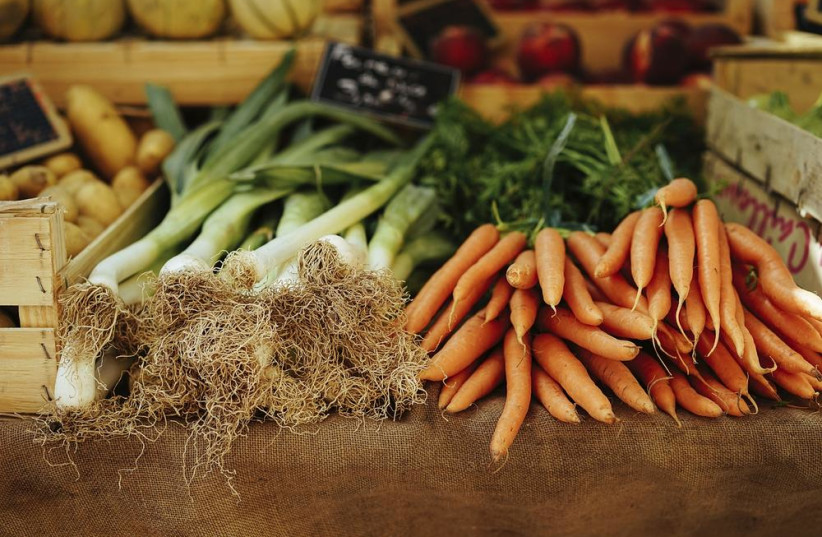Selecting which veggies are the best to eat is a difficult challenge.
Vegetables are probably the best food you can give your body, and they're available in a variety of shapes, tastes, textures and colors. Still, people like lists and ratings, so we also decided to try, but with a small addition:
Eat vegetables. No matter which ones. They aid digestion, help your brain function, improve your skin's appearance, add shine to your hair and even extend your life.
Here are our five picks:
Broccoli
A cup of broccoli provides 116% of the recommended dietary allowance (RDA) of vitamin K and 135% of vitamin C, as well as a sufficient amount of folic acid, manganese and potassium.
Also, broccoli is one of the richest vegetables in calcium, and helps the body absorb it. Broccoli leaves are rich in nutrients and protein, and contain the highest amount of vitamin A and fiber compared to other green leaves.
Broccoli belongs to the group of cruciferous vegetables, one of the highest quality food groups for good health. Research has revealed that various compounds and certain enzymes found naturally in cruciferous vegetables may actually prevent the recurrence of various types of cancer by killing cancer stem cells.
Also, eating broccoli may help prevent various types of chronic diseases. A 2010 study on animals found that eating broccoli sprouts can protect the heart from oxidative stress that causes it damage by significantly lowering oxidation levels.
Purple cabbage
Purple cabbage contains all the already listed benefits of cruciferous veggies, and has some benefits of its own. One cup (89 grams) of red cabbage contains 2 grams of dietary fiber, as well as 85% of the daily vitamin C requirement.
Red cabbage is also rich in anthocyanins, a group of plant compounds that give it its distinct color as well as many health benefits.
Consumption of anthocyanins can help protect against atherosclerosis which leads to cardiovascular disease. Also, these pigments act as antioxidants which prevent oxidation of the "bad" cholesterol in the first place, and they have an anti-inflammatory effect which keeps blood vessels healthy which then helps reduce high blood pressure.
According to other studies, another component in cabbage called sulforaphane, the one that gives cabbage its bitter taste, can prevent or delay certain diseases like esophageal, pancreatic and prostate cancer, and also melanoma.

Researchers have discovered that the sulforaphane in cabbage can inhibit the histone deacetylase enzyme, which is involved in the development and progression of cancer cells.
Carrots
Carrots are known as a food that preserves eyesight, but that's not the only benefit. Carrots are full of vitamin A, providing 428% of the RDA in just one cup (128 grams).
Carrots are also rich in vitamin C, an antioxidant which strengthens the immune system, vitamin K and potassium.
Carrots have beta-carotene, an antioxidant that gives carrots their orange color and can help prevent cancer. One study found that for every serving of carrots per week, participants' risk of prostate cancer decreased by 5%.
Another study showed that eating carrots may reduce the risk of lung cancer even in smokers. Compared to those who ate carrots at least once a week, smokers who didn't eat carrots had three times the risk of developing lung cancer.
Carrots also contain a large amount of soluble fiber, so it seems that they can help reduce bad cholesterol levels, or LDL, and raise the levels of good cholesterol in the blood, HDL. This effect reduces the risk of forming blood clots and the cardiac complications associated with them.
Mangold
This is also known as Swiss chard, and this group of veggies includes spinach, kale and other green leaves, each with a different advantage. Yet, chard has a particularly high amount of vitamin K. One cup of chard leaves contains nearly 3 times the RDA for consumption.
Chard is full of magnesium, which is important for muscle and nerve function, regulation of blood glucose levels and blood pressure.
Swiss chard is particularly known for its potential to prevent damage caused by diabetes. In one study on animals, chard extract was found to reverse the effects of diabetes by reducing blood sugar levels and preventing cell damage from disease-causing free radicals.
Other studies have shown that the antioxidant amount in chard extract can protect the liver and kidneys from the negative effects of diabetes.
Garlic
Over time, many cultures have attributed medicinal properties to garlic for the prevention and treatment of a wide variety of diseases and medical conditions. Some of those benefits are scientifically supported and other parts less so, but in any case garlic is a healthy and tasty ingredient.
Garlic acts against bacteria. Several studies have shown that fresh garlic (and not dried) can kill certain bacteria, such as E. coli, resistant staphylococcus and also salmonella under lab conditions.
This mechanism can indicate that fresh garlic may have a certain role in preventing, for example, infections as well as food poisoning.
Other studies found that garlic may be effective in slowing down the development of arteriosclerosis and also reduce, albeit to a minimal extent, blood pressure. Another study from China found that eating garlic, leeks, green onions and chives can help reduce the risk of developing colon and rectal cancer.
